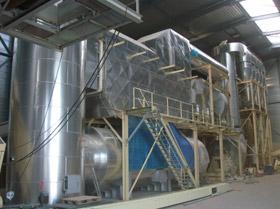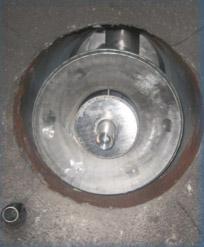- europages
- >
- COMPANIES - SUPPLIERS - SERVICE PROVIDERS
- >
- temperature profile
Results for
Temperature profile - Import export

ARUBIS
Belgium
These EDPM profiles can be tailor made to fit any product in need of edge protection. Depending on the selected quality and rubber type it can be food grade (FDA) and can withstand high temperatures. Rubber profiles are commonly used for protecting and sealing the windows and doors in the vehicle industry. Resistance to tears and perforations. Flexible Custom sizes and forms on demand Types of rubber for profiles and seals Arubis provides many types of rubber seals and profiles. Most commonly rubber channels are made of neoprene, EPDM, NBR, NR and SBR rubber. However the most common type is EPDM rubber profiles. EDPM rubber provides resistance to heave weather, Ozone and UV light. Usage in many types of industries Rubber seals in EDPM, Rubber channels, U-channels and rubber fender profiles are commonly used as protection and buffer strips for boats and vehicles, and are commonly known as rubber fittings for vehicles. These rubber U-profiles

EUROPEM
Belgium
The Tulip Vortex burner was developed specifically for (temperature controlled) combustors for the treatment of lean waste gases and vapours. It employs the same design philosophy as the Ultra-low NOx Tulip Vortex burners but is designed for the combustion of lean waste gases, whilst minimizing support fuel requirements. The burner creates an intense gas recirculation zone near the burner to ensure that waste gas, flue gas and combustion air are mixed. The resulting moderate flame temperature minimizes NOx formation. The homogeneous temperature profile and swirl result in complete oxidation and low CO emissions.
Request for a quote
EUROPEM
Belgium
A SRU incinerator is an oxidation-reduction reactor for the recovery of elemental Sulphur from H2S rich waste gases. The first stage of the so called Claus process, is the complete free flame oxidisation of typically 1/3 of the H2S to SO2 in a reaction furnace (H2S + 1½ O SO2 + H2O). The SO2 and the then remaining H2S undergo the Claus reaction both in the reaction furnace and in a series of catalytic reactors (2 H2S + SO2 3S + 2 H2O) resulting in the overall chemical reaction H2S + ½ O H2 + S. Key Features One combustion chamber with mixing wall Part of the waste containing H2S is injected through the burner, the remainder before the mixing wall. The burner is a robust Multifuel design suitable for the combined combustion of different waste gas and gaseous or liquid support fuel streams. The mixing wall ensure the waste and combustion gases combine and also ensures a uniform temperature profile to improve the overall efficiency of the reaction. Key Advantages - Sulphur recovery – Ultra-low NOx combustion possible – Complete oxidisation of all hydrocarbons – No CO formation – Complete odour destruction – Destruction efficiency over 99.99% – For waste air/gas streams containing a high percentage of H2S
Request for a quote
EUROPEM
Belgium
A LedeNOx incinerator is an oxidisation-reduction reactor and is the ideal design to achieve low NOx emissions whilst burning waste streams that contain Ammonia and bound Nitrogen. Part of the waste stream containing Ammonia is oxidised and forms NOx in the process. This NOx is then reduced by injecting the remaining Ammonia rich waste stream, where the Ammonia is used to promote a non-catalytic deNOx reaction and reduce NOx to Nitrogen and water. Key Features One combustion chamber with two mixing walls Part of the Ammonia containing waste is injected through the burner, part between the mixing walls. Part of the Ammonia is oxidised to form NOx, whilst the remaining Ammonia is used to react with NOx to form N2. The mixing walls ensure that the waste and combustion gases are mixed and also ensures a uniform temperature profile to improve the overall efficiency of the deNOx reaction. Key Advantages No need for SNCR or SCR deNOx to meet emission limits Ultra-low NOx combustion of waste streams with high bound Nitrogen or Ammonia contents. Complete oxidisation and destruction of all hydrocarbons No CO formation Complete odour destruction Destruction efficiency over 99.999%
Request for a quote
EUROPEM
Belgium
Most of the combustion systems currently available in the market attempt to achieve their low NOx emissions combined with low CO emissions and stable combustion by employing relatively long flames, staged combustion air/fuel and with mechanical provisions near the flame to create swirl. The EUROPEM Ultra-low NOx burners use a different philosophy to achieve complete and stable combustion along with ultra-low NOx emissions: The use of thin and short flame profiles: Empirical evidence shows that narrow and short flame profiles achieve the lowest NOx emission values. Controlled flame temperatures: The flame temperature is controlled at a temperature high enough to ensure that no CO is formed whilst the temperature is low enough to avoid any NOx formation. Oxygen concentration near the flame is controlled such that the faster hydrocarbon reaction depletes all the oxygen before NOx can be formed by the slower N2 to NOx reaction. Internal flue gas recirculation: The high velocities at the burner mouth create an internal venture effect which in turn results in internal flue gas recirculation around the flame. A stable and uniform temperature profile without hot spots created in the flame will further minimize NOx formation. EUROPEM Ultra-low NOx burners are equipped with a windbox giving tangential entry of the combustion air to create a natural swirl around the flame. This principle is also employed for the waste gases entering the burner so that additional swirl is created by one or more waste gas streams. Support fuel and rich waste gas are injected through a shell type disc to obtain a narrow and short flame profile. A “tulip flame profile” or “balloon flame profile” are selected, depending on the fuel characteristics.
Request for a quote
EUROPEM
Belgium
EUROPEM MultiFuel burners have a modular design to allow up to 15 waste gases and liquids to be co-combusted. The main burner body consists of a wind box with baffles. Two or three concentric central injection lances with injection nozzles are placed inside the air stream to inject the combustible liquids or gases. One or more rings with peripheral injection lances can be added for support fuel and/or to increase the number of waste gases that can be combusted. Low NOx emissions are achieved through staged combustion and a controlled flame temperature profile. Primary air is supplied through the burner wind box while secondary air is injected in the pre-combustion chamber. Axial MultiFuel Burner 1 to 20 MW capacity Long flame profile Suitable for rotary kiln and furnaces with long residence time Modular design Radial MultiFuel Burner The Radial MultiFuel Burners are equipped with a vortex control valve which enables manual control over the amount of turbulence and rotation that is given to the combustion air and the fuel/waste mixture. 1 to 20 MW capacity Control valve to control vortex and turbulence of the flame Shorter flame profile Suitable for standard fuels as well as combustion of waste gases and liquids Modular design Low CO emissions Low NOx emissions Robust design without moving parts for reliable operation Low maintenance requirements Most EUROPEM burners do not require a pre-combustion chamber or a secondary air injection chamber. This results in a shorter and hence more competitive overall combustion chamber design. Burner designs with pre-combustion chamber’s can also be furnished for specific applications.
Request for a quoteDo you sell or make similar products?
Sign up to europages and have your products listed
Results for
Temperature profile - Import exportNumber of results
6 ProductsCompany type
Category